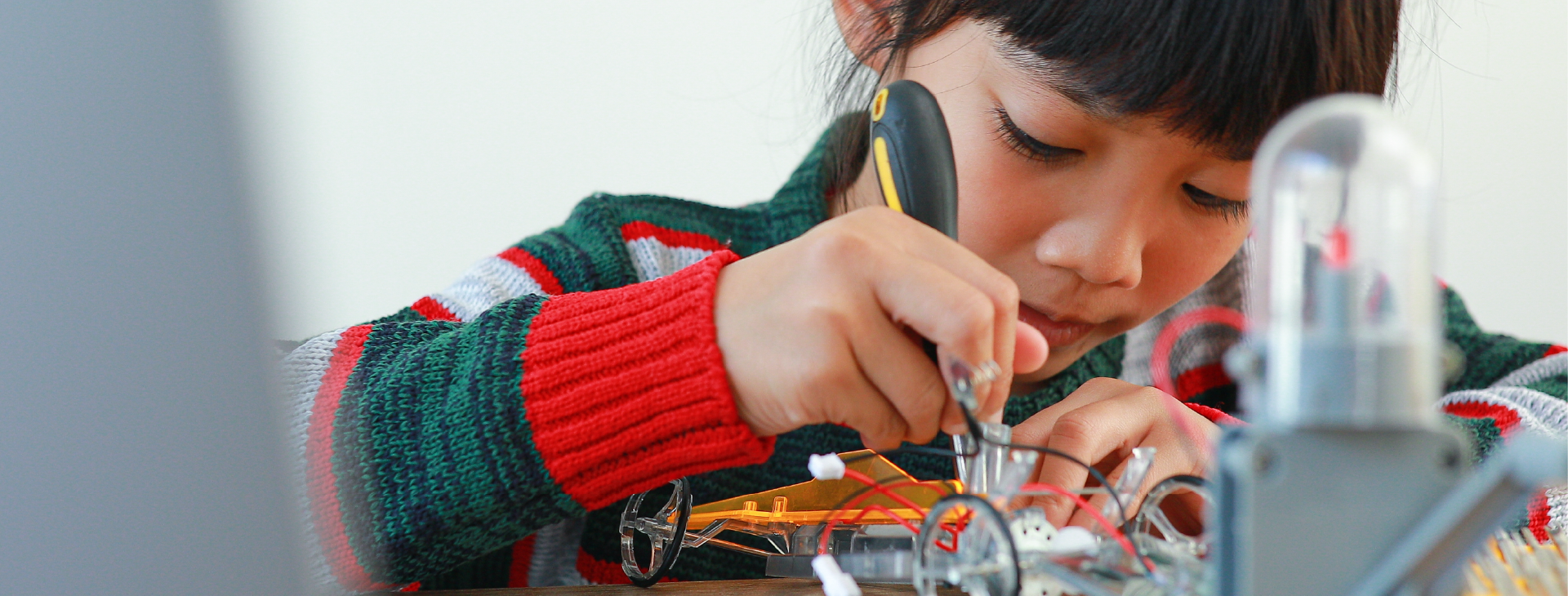
Assessing Students’ Creative Thinking
Principles for Design and Use
My colleagues and I have spent the past several years writing about promising instructional and assessment practices to cultivate 21st century skills in K-12 schools. We have now built a repository of blog posts and literature reviews on defining, teaching and assessing these skills.
In this blog, I’ll summarize what we’ve learned about one of those skills: creative thinking. I’ll present a working definition of creative thinking and highlight instructional and assessment practices that support the development of creative-thinking strategies. I’ll conclude by discussing implications for the design and use of creative-thinking assessments.
For the full collection of related blog posts and literature reviews, see the Center for Assessment’s toolkit, Assessing 21st Century Skills.
Why Should Educators Care About Cultivating Creative Thinking?
According to the World Economic Forum, creative thinking ranks as the fastest growing and second-most-important skill employers are seeking. Employers ranked skills-training programs in creative thinking as more important than those in areas such as artificial intelligence (AI) and big data.
Ironically, creative thinking was once thought to be a skill that could not be learned, but decades of research have debunked this idea. Interrelated skills required for creative thinking can develop through instruction, deliberative practice and improved environmental conditions. Educators can be trained to facilitate students’ creative thinking abilities. And they can be trained to assess—and use assessment information to develop—students’ creative thinking abilities.
Defining Creative Thinking
In my recent literature review on creative thinking, I presented the following definition, synthesized from my qualitative analysis of the research:
Creative thinking is an iterative process in which a person generates and manipulates ideas; tests, refines, and modifies those ideas through critical analysis and evaluation; and communicates ideas to solve a problem, improve problem solutions, or advance knowledge in novel ways.
Definitions of creativity and creative thinking often overlap. But a comparison reveals a few distinct differences.
Definitions of creativity tend to be broader in scope than definitions of creative thinking. Creativity definitions incorporate aspects of the creative person, process, product, and press (the environmental conditions that promote creativity).
Definitions of creative thinking, on the other hand, tend to focus more narrowly on the person and process aspects of creativity; that is, the habits of mind and processes a person uses to develop, iterate, and improve upon products, ideas, and outcomes. Assessments of creative thinking, therefore, tend to focus on a student’s thoughts, emotions, and behaviors as s/he engages in the creative process.
Assessments of creativity, by contrast, incorporate the final product as an additional evidence source to address the extent to which the final product/outcome was novel and useful for achieving a specific purpose.
Instruction For Creative Thinking
Frameworks for the creative-thinking process generally identify four instructionally malleable components:
- Divergent thinking: Generating a wide range of ideas or solutions
- Experimenting: Combining and manipulating ideas and idea components; redefining the context through which ideas are developed to generate additional possibilities
- Reflecting and Evaluating: Considering the merit of each idea and its contribution to addressing the problem or intended outcome
- Elaborating: Communicating an idea’s potential for meeting a given purpose
Designing Assessments For Creative Thinking
Educators who want to develop (or adopt) and use high-quality assessments of creative thinking and other 21st century skills should attend to a few key issues.
Develop a clear definition of the construct you intend to measure. A clear definition is the foundation of sound measurement and assessment. Unfortunately, research literature often conflates the concepts of creativity, creative thinking, and specific components of creative thinking. This compromises validity for the test’s intended use. A clear definition makes it easier to (a) clarify the desired inferences that educators expect to make from assessment results, (b) determine what evidence will be collected, and (c) design or select assessment approaches and tools that provide information to elicit the appropriate evidence and support valid inferences.
Account for mediating factors. Assessment of creative-thinking skills is complicated by a range of skills and dispositions. Students’ content knowledge and dispositional skills, their cultural backgrounds, and the contexts in which they’re taking the test are potential confounds of creative-thinking outcomes. Therefore, the design of creative-thinking measures—and especially standardized measures—must account for the potential role these factors play in a student’s creative-thinking development and performance. Doing so will mitigate the likelihood that factors unrelated to creative thinking will affect assessment interpretations.
Use results to promote learning, not summative evaluation. Assessment suppresses creativity when it is used—or perceived to be used—for competition and comparison. High-stakes testing can discourage creative thinking, especially in low-performing schools. The pressure to raise scores on such tests can intensify a focus on drill-and-kill skills, influence more traditional and rigid instruction, detract from activities that encourage exploration and discovery, and discourage teachers and students from focusing on related higher-order skills like critical thinking and problem-solving. In contrast, using creative-thinking assessments for formative purposes can improve students’ creative thinking skills.
Implications of Research for Classroom Assessment Use
Decades of research highlight promising instruction and assessment practices to cultivate creative thinking. The research points to important implications for classroom assessment use. I highlight three of the most salient implications below.
Use a range of assessment information to support creative thinking. Educators should incorporate a variety of summative tools and formative strategies in their practice. They should consider gathering evidence from numerous sources that include self and peer assessment, as well as teacher and expert feedback on student work products.
Prioritize Assessment Practices that Complement Promising Instruction. Although the field is not definitive about which instructional strategies are most effective for promoting creative thinking and other higher-order skills, there are well-established and reliable instructional principles of good instruction. Approaches such project- and problem-based learning are two examples. I include a more in-depth review of promising instructional strategies in my literature review.
Use assessment to improve environmental conditions for creative thinking.The environment in which students learn to be creative is a critically important lever for integrating creative thinking into students’ and teachers’ everyday behaviors. Schools should collect and use information to assess school climate and social-emotional supports (i.e., the creative press) to promote creative thinking and performance.
Adults in schools play a valuable part in role-modeling creativity. Educators who prioritize the creative process likely will incorporate creative practices into their day-to-day conversations, model behaviors that cultivate creativity, and encourage students to practice creative thinking and value creative behaviors.
The Road Ahead
Research suggests that measuring creative thinking is not only possible; it can be used in powerful ways to develop and optimize the creative potential of students. Doing so requires gathering data from multiple sources to understand the richness and breadth of creativity, in an appropriate context, and for appropriate purposes. Creative thinking is perhaps best developed through everyday formative instructional strategies that emphasize the development of skills and behaviors associated with the creative process, and in school communities where adults are devoted to developing their own creative potential.
Our research on creative thinking was supported by the International Baccalaureate (IB) Programme. The author would like to acknowledge the thought partnership and feedback from colleagues who contributed to this work, including Jen Merriman and Magda Balica from IB, and Will Lorié and Carla Evans at the Center for Assessment. All errors and omissions are my own.
